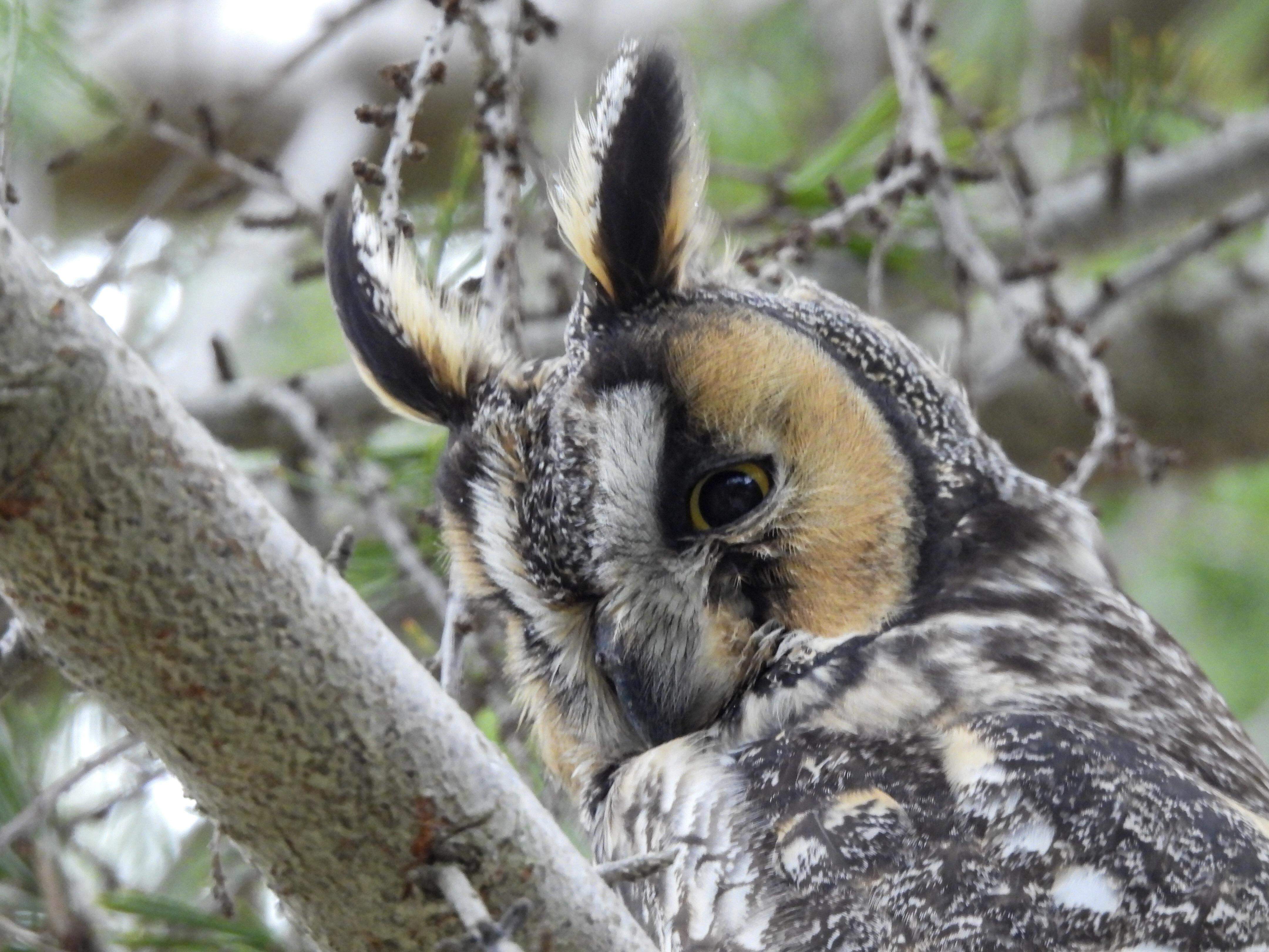- cross-posted to:
- reclamation@slrpnk.net
- cross-posted to:
- reclamation@slrpnk.net
“prior to the training the dogs were known to only walk, hop, skip and amble through forests…”
Do you have a link to info about this story? Sounds cool and obviously people are interested to know more from the comments.
Thanks for that. Great to see they’re using native seeds and the program has been so successful they’ve been approached by groups in Australia and California to possibly adopt a similat approach.
“Trained to run around a forest”
So, like a dog? :)
Not an expert on this but…
Forests usually recover just fine after a fire. They’re a natural process after all. You don’t need to go throw seeds around to help it recover.
Of course, with the advent of climate change that’s no longer true in all cases, with drier areas burning hotter than previously and destroying old growth forests.
The thing is, you can’t just throw around “big old tree” seeds - you raise seedlings / saplings and then plant them in appropriate places.
Additionally, even if you were trying to spread seeds around, IDK whether a dog could achieve an even or even a random spread. Unpredictable yes, but not random.
So, cute dogs and stuff, bit I think this is a pretty niche application and not often required in forestry.
Yeah, also I don’t know if they are biologists/foresters but hopefully they use native or at least compatible seeds for the areas. There are lots of grass types which can become invasive and destroy habitat for the local wildlife if they use the wrong species.
Where I live we just use helicopters, and mostly only because it’s mountainous so we want to establish the grass back as quickly as possible before the rain hits and washes all the soil away into the rivers.
I didn’t read the article, so correct me if I’m wrong, but the title says “plant seeds” not “tree seeds”, so it’s probably a variety of plants. And my guess is none of them are “tree seeds”, not only for the reasons you already stated, but also for the simple fact that “tree seeds” are too big for the bags those dogs are carrying in the thumbnail.
Yeah I got a bit side tracked talking about how fires have been more intense in recent years and now “big, old, trees” are dying in fires where they didn’t in the past.
Still, and I don’t know how applicable this is to other places, but here in Australia fires are an important part of plant life cycles.
First Nations people used to burn areas for a variety of reasons, one of which is that it would attract marsupials in the coming weeks and days coming to eat the new shoots bursting through the ground after a fire. So you could burn an area within walking distance from your camp, and over the next few weeks have a ready herd of kangaroos hanging around from which to cull a few.
Not really relevant but firehawks aparently spread fires. Also a lot of Australian plants are stimulated to germinate after being exposed to heat and smoke.
I guess my point is, spreading seeds after a fire isn’t a problem that needs solving. Fire is a natural process and the bush generally bounces right back quicker than you’d expect.
My understanding is that Australia gets a lot of rain certain parts of the year, California does not
Ok well, I’m sure these dogs will be incredibly useful in California and one wonders how it didn’t turn into a dusty wasteland without them.
As an aside, Australia is a big place mate. Some areas have loads of rain some have none.
It didn’t turn into a dusty wasteland because global warming wasn’t as severe as it now, bud
Could be used as a way to prevent erosion on hillsides. The plants will die out once native species are established. They just have to hold on to the soil for the native species to grow.
trained to run around a forest
Easiest dog training ever done
The hard part is getting them to stop running in the forest.
Years later, with the entire planet covered in woodland overgrowth, humanity’s last gasp was accompanied by the withering cries of “Fenton! FENTOOOOOOON!”
For today’s lucky 10,000 here’s the video you referenced: Jesus Christ in Richmond Park
You are a gentleperson and a scholar, sir or madam. I wasn’t sure if anyone was going to get the reference. It’s an older meme, but it checks out.
“Jesus Christ!”
Oh Jesus. Thanks for that.
looks like everyone came to comment on this. I was just going to do trained??? My dog would so love this job.
Well great, because 3 dogs are not enough. 1. Where do we get these packs / designs? 2. Where do we get seeds? My town has a ‘seed library’. Maybe your’s does, too?
Just be aware that habitat conservation/restoration is rarely as simple as spreading some seeds. Sometimes removing some invasive plants that are out competing the natives is enough, other times is as complex as reintroducing predators. I would recommend finding a volunteer program to work with so you can ensure you’re helping where it’s needed most.
If you’re in the united states, I recommend checking out your state’s Master Naturalist program. In my state, it involved a short classroom training course with several “field trips” to help with the training process. The group helps coordinate volunteer opportunities in the community. The program is an offshoot of the Master Gardener program which I think focuses more on maintaining residential landscapes.
No matter what you decide to do, it’s great to want to help.
This is really cool. I’ve heard of Master Gardeners (for example, through your local Cooperative Extension) but had never heard of Master Naturalists. Thanks for sharing this.
Username checks out!

Unamused.
Three Dog, giving the dogs a pep talk:
Now what if I, the all powerful Three Dog, bow-wow-wow, were to tell you that somewhere right here in
the Capital Wastelandcentral Chile* is a place with lots of trees?Dogs: barking excitedly while running in place with almost dangerously waggy tails in anticipation
I think our actual library is just in process of starting one.
It’s a different story once you do it professionally as a 9 to 5 job (maybe it’s not)
“Mornin’ Sam.”
“Mornin’ Ralph.”
“What’s for dinner?”
SQUIRREL!
Hey Bandit, I need your KPIs re: frolicking in the forest by end of day
“Heel! We need to refill your backpack!”
Yeah, all the dogs I’ve had would require no incentive what-so-ever.
I don’t think you need to train a dog to be a dog, you could probably just let them manage it on their own.
This is the kind of news we need to hear about.
I like the flinstones timeline much more than the cyberpunk timeline
Whosagoodboyyouareyesyouare
I don’t know the details, but this kind of restoration sounds problematic. The safest way is to let the natural seed bank work. To bring seeds from somewhere else means to mix different genotypes, which can lead to the loss of some of the genotypes naturally occuring there. I hope they thought this through properly - the whole case might be rather interesting.
Would be nice if OOP shared a link to the story instead of just a meme image, then the comments would be much more informed.
Edit: OOP has shared a link to the story. They are using native seeds. https://www.bbc.com/news/av/world-latin-america-53532912
They’re not necessarily seeds from other places. Could be from 500 meters away. But it’ll speed things up a bit, maybe stop some soil erosion from happening by skipping a season or two of barren land.
Seems wildly inefficient, but we haven’t seen it in action nor seen the results after a year or three.
Reminds me of those “wholesome” stories about little Bobby and his elementary school class fixing the environment by doing something the government is responsible for.
Now for one of Trump’s golf courses
Who’s a good boy!
Best job ever.
Such a solarpunk vibe!





